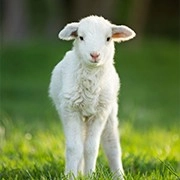Wild Strawberry Guide

Strawberries are one of our favorite fruits—sweet, juicy, and packed with nutrition. Right now, it's peak strawberry season, and many of us are enjoying store-bought strawberries or even heading to farms to pick our own.
But did you know? Apart from the strawberries grown on farms, there are many types of wild strawberries in the countryside. Some of them taste just as good as the ones we buy, but because they don't grow in large quantities, they remain lesser-known wild fruits.
Today, let's take a look at four types of wild strawberries found in rural areas. The first one is often said to be eaten by snakes and considered poisonous, while the fourth is so rare it's known as a “luxury” fruit. If you ever come across these in your hometown, be sure to take a closer look!
Revitalize Your Health With The 30-Day Abc Juice Challenge! See The Benefits In Just One Month!
Boost Hair Growth Naturally With Avocado! Learn How Applying Or Eating Can Work Wonders!
Boost Hydration And Health With Basil Seeds Water! Perfect For Digestion, Skin, And Overall Wellness!
Fresh, Tangy, And Packed With Nutrients, This Raspberry Juice Will Keep You Refreshed And Healthy!
Discover the Best Vegan Chocolate Coffee Chia Pudding Recipe - Healthy, Delicious, and So Easy to Make!
The Easiest Chocolate Chia Pudding Recipe You’ll Ever Make – Healthy, Vegan, and Delicious!
Snakeberry
The first wild strawberry we must mention is the snakeberry. It is the most widely found and commonly seen wild strawberry in rural areas. Snakeberry is a perennial herb from the rose family and usually bears fruit between April and October, depending on the region. Its fruit is about the size of a fingertip and looks just like a regular strawberry, which is why people also call it “wild strawberry” or “little strawberry.”
However, despite looking like a strawberry, people rarely eat snakeberries. In many rural areas, older generations often say that snakeberries are food for snakes and that they are poisonous. The truth is, snakeberries are not toxic and can be eaten, but they don't taste very good. They tend to grow in damp areas, which makes them less clean and not the best choice for a wild snack.
You can recognize a snakeberry when you see one, but it's best to leave it alone!
Mao Berry
You might not have heard of Mao Berry, but if you've spent time in the countryside, there's a good chance you've eaten it. Locally, it is sometimes called "March Bubble," though it actually ripens in July and August, not March. The name comes from its resemblance to another wild berry that ripens in March.
Mao Berry is a shrub plant from the rose family and usually grows to about 1–2 meters tall, making it easy for both kids and adults to pick. The fruit is juicy, sweet, and slightly sour, making it a favorite wild fruit among children. Aside from eating it fresh, people in rural areas also use it to make vinegar or brew fruit-based drinks. Because of its many uses, whenever Mao Berry is in season, people often head to the mountains to pick as much as they can.
White Bubble (Bai Piao)
In recent years, white strawberries have become a trendy and expensive fruit in markets. These are mostly imported varieties, especially from Japan. But did you know that China has its own native white strawberry? It's called Bai Piao, or "Yellow-Haired Strawberry" in scientific terms.
Bai Piao is a wild strawberry that only grows in certain provinces like Shaanxi, Hubei, Hunan, Sichuan, Yunnan, and Guizhou. It prefers high-altitude areas, usually between 800 and 2700 meters, where it thrives in grassy slopes, valleys, and forest edges.
In the countryside, Bai Piao is also called "White Bubble." It has a strong fragrance, a sweet and tangy taste, and is considered even more flavorful than regular strawberries. Scientists have found that Bai Piao contains high levels of nutrients, including sugars, proteins, and essential minerals—some of which are even higher than those found in common fruits like strawberries, grapes, cherries, and apples.
If Bai Piao were ever cultivated for large-scale farming, we could all enjoy delicious and affordable white strawberries!
Raspberry
Raspberries, also known as "Mountain Berries" or "March Bubble" in some places, are a classic wild fruit found all over China, except for Qinghai, Xinjiang, and Tibet. These berries have a long fruiting season, from March to June, making them a popular pick among foragers.
Raspberries are delicious—sweet, slightly sour, and full of juice. They are also packed with nutrients and have become a commercial fruit in recent years. Many farmers now cultivate them, but because raspberries are delicate and spoil quickly, they tend to be expensive. If you visit a supermarket, you might see a small 50-gram box selling for over ten yuan, meaning a full kilogram could cost more than 100 yuan! No wonder people call it a "luxury" wild strawberry!

China's rural areas are home to many different wild strawberries, and today, we've only introduced four of them. There are still many more waiting to be discovered! Have you ever seen or tasted any wild strawberries that weren't mentioned here? If so, share your experiences with us! Lykkers, let's exchange stories about these hidden countryside treasures!

 · Food Team
· Food Team